Birgit Jürgenssen Exhibition
McCaffrey Fine Art presents its first exhibition of the work of Birgit Jürgenssen (1949–2003.) Born and educated in Vienna, Jürgenssen died prematurely at the age of 54. Her artwork received scant attention during her lifetime, however, recent monographs by Gabriele Schor and Abigail Solomon–Godeau have begun to spread awareness of the depth and breadth of Jürgenssen's artistic achievement.
Birgit Jürgenssen is the missing link that is finally being discovered not only for Austrian feminism between Maria Lassnig and Valie Export, but also for the international women's art movement from Francesca Woodman to Cindy Sherman. As a result of her surrealist and structuralist tradition within this spectrum, she occupies a universal position. In order to better understand her status: Birgit Jürgenssen represents a contemporary position in the line of Meret Oppenheim and Louise Bourgeois. —Peter Weibel mehr
Growing up in the era of über-expressionist Viennese Actionism and coming of age in a conservative, male-dominated Viennese art world, Jürgenssen developed an extraordinarily rich private studio practice that encompassed drawing, performance, photography, and sculpture. McCaffrey Fine Art's exhibition features more than 30 examples of Jürgenssen's astonishing works on paper created between 1969 and 1980. The exhibition will be supported by a selection of her photography and sculpture.
The body is implicated in much of Jürgenssen's work, with hair a particular focus. The artist's iconic Mrs. Churchill (z716)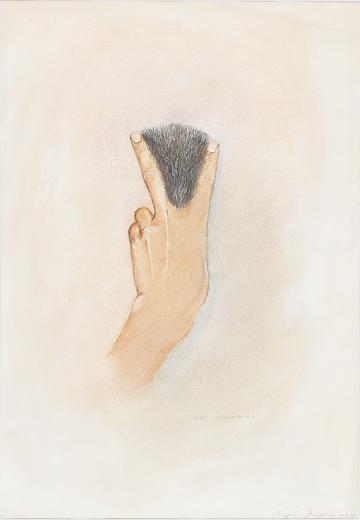 , 1976 features Winston Churchill's victory salute framing a triangle of pubic hair. In Untitled (z176)
, 1976 features Winston Churchill's victory salute framing a triangle of pubic hair. In Untitled (z176)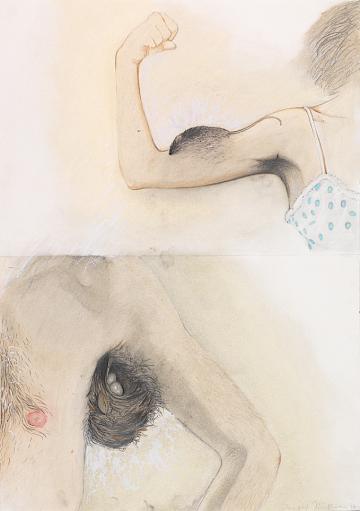 , 1977, a bird's nest with eggs is rendered from the hair of a man's arm pit. Elsewhere, mice act as cyphers to replace bicep muscles, occupy beds (z901)
, 1977, a bird's nest with eggs is rendered from the hair of a man's arm pit. Elsewhere, mice act as cyphers to replace bicep muscles, occupy beds (z901)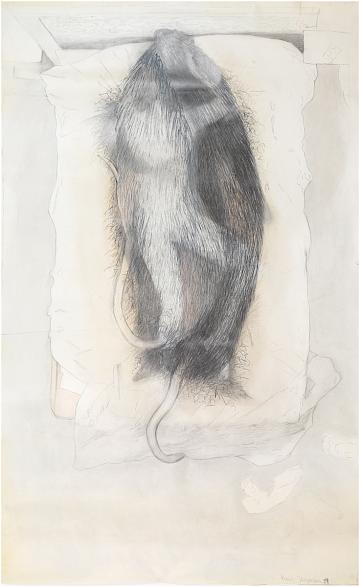 , and integrate themselves into books (z225)
, and integrate themselves into books (z225)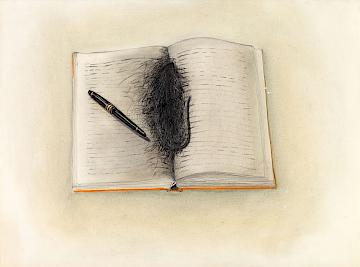 . Jürgenssen's self-portraits often represent hybrid human forms such as Frog Shoulder Belt (z719)
. Jürgenssen's self-portraits often represent hybrid human forms such as Frog Shoulder Belt (z719)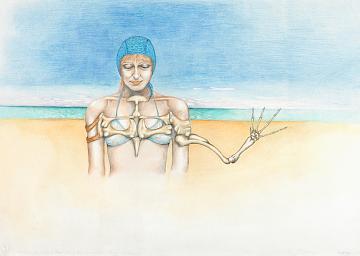 , 1974, and Iron Maiden (z97)
, 1974, and Iron Maiden (z97)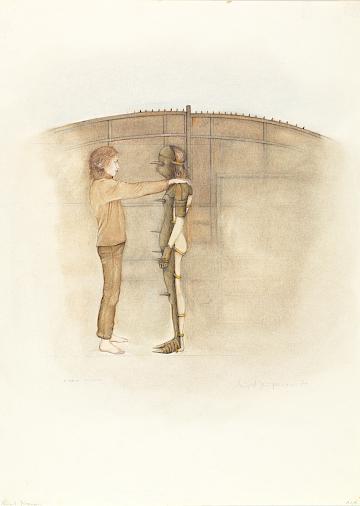 , 1976, showing the female body adapted and armored, debunking gender codes and roles.
, 1976, showing the female body adapted and armored, debunking gender codes and roles.
Jürgenssen's art does not focus exclusively on gender issues, however. Her early untitled drawings from 1969 revel in psychedelic pop culture with fluffy, Lorax-like trees and Yellow Submarine-style cartoon characters rendered in exquisite detail and glorious color. In the early 1970's, her surreality expands into the realm of the real in dream-like vistas. Here a fried egg in a frying pan replaces the moon glowing through a bedroom window (Untitled (z136)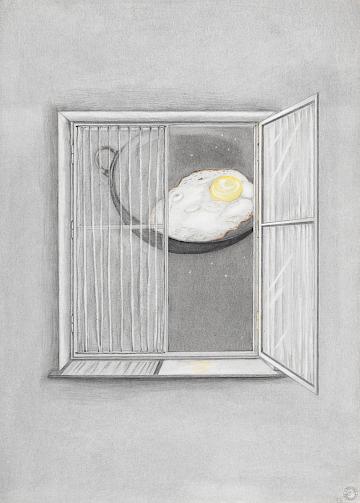 , 1973); anthropomorphic airplanes circle around and adhere to flypaper (Flypaper (z133)
, 1973); anthropomorphic airplanes circle around and adhere to flypaper (Flypaper (z133)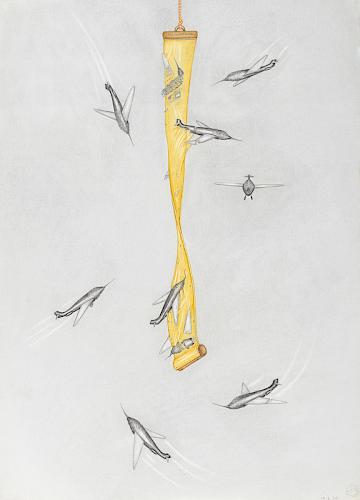 , 1974); and a hybrid bird/jet liner soars above the grave of a locomotive train engine, pursued by a horse, ostrich, and automobile (Locomotive (z122)
, 1974); and a hybrid bird/jet liner soars above the grave of a locomotive train engine, pursued by a horse, ostrich, and automobile (Locomotive (z122)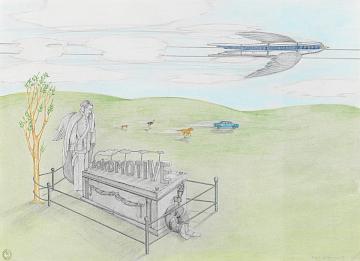 , 1973.)
, 1973.)
Jürgenssen studied at the University for Applied Arts, Vienna from 1968–71. A solo exhibition of her drawings took place at Graphische Sammlung, Albertina, Vienna in 1978. From 1980–97 she lectured at both the University of Applied Arts, Vienna, and the Academy of Fine Arts, Vienna. Understanding of Jürgenssen's work has been nurtured by Galerie Hubert Winter, Vienna, since 1981. Recent solo museum exhibitions include Sammlung Verbund, Vienna, 2009 and Bank Austria Kunstforum, Vienna, 2010.